(This old year is gasping its last breaths — and even fewer are left than the last time we welcomed our friend Gorger from Norway — but he has found time for one more collection of 2017 releases that we haven’t previously reviewed before the death rattle. To find more of his recommendations, type “Gorger” in our search bar or visit Gorger’s Metal.)
Welcome to Part XXX in this here attempt at filling the gaps left by the runaway NCS high-speed rail. Last time around, I wrote about “four new picks” in the ingress. I obviously can’t count for shit. Also, Islander’s prequel indicated that BtNCSR pt.29 was my last endeavour to finish off 2017. Well, I never told him that I was hoping for one more, and truth be told, I wasn’t betting on it either.
I do have more 2017 metal to share, but that’ll have to wait ’til next year. In the meantime, my top 20 will emerge amidst the Listmania® madness. I’ve narrowed down my candidates from more than 60 to 30 at the time of writing. The finals will be tough as hell.
AEGRUS – THY NUMINOUS DARKNESS
Finnish Aegrus was born as a duo in 2005. The two comrades have delivered several demos, as well as a couple of EPs. The last one just last year, not much more than a year after the debut was launched ten years after the initial inception. The Conjuring the Old Echoes EP was duly presented by both my compatriot eiterorm here and by commander-in-chief Islander here. I have unfortunately not listened to the earlier achievements of the band. Thus I can’t claim that Thy Numinous Darkness is their magnum opus. Yet, I have a suspicion that this is the case. Fans of satanic black moods conveyed with abundant melodies ought to sharpen their ears.
The guys have visited Blackvox Studio, and received a production that clearly emphasizes the details of their chilled scenery. The guitars are sharp as shiny icicles that reflect the flashlight’s flimsy rays in the icy cave. The drums thunder like glaciers when violent forces makes tons of frozen ice fracture. The violently tearing vocal is delightfully rough over the guitar’s mournfully weeping tones of wailing grief.
Aegrus conveys dim moods of depression, hatred, and disgust. Sharpened guitar strings, black-scorched vocals, and gloomy riffs that sprinkle soot, often have the habit of conveying negativity with a whiff of reckless stubbornness. Thy Numinous Darkness nevertheless stands out with exceptionally strong melodic moods.
Vibes of Windir, though fortunately not too marked, sometimes appear in the band’s hefty flair for melodies. Perhaps especially in Psalms of Satan, where the vocal rhythm also points in the same direction. Several songs deserve to be mentioned. Among them, Embodiment of Chaos. A fashionable start to a 47 minute long work. I nevertheless choose to illuminate Transcendence, a beautiful album-swansong so to speak, where wistful melancholy flows in torrential streams.
Aegrus delivers with panache. The atmosphere of defying discouragement, despair, and obstacles by means of determination, rolled-up sleeves and gritted teeth, is formidably conveyed through gorgeous melodies and a razor-sharp soundscape that flashes like lightning in the glare of the steel ice that hangs like frozen stalactites from the ceilings of the cave. Thy Numinous Darkness has been played a lot, and for good reasons, as it is among the most ripping I’ve heard in quite a while.
Thy Numinous Darkness was released by Saturnal Records on October 10th.
HEIR – AU PEUPLE DE L’ABÎME
French Heir is another new act ready to claim their place in the collective black metal awareness. The band play a form of dissonant post-metallic black depression with dystopic moods. Au Peuple de l’Abîme is not a concept album, but the quintet has a common platform, as they consider that mankind has inherited an earth it doesn’t deserve. Heir seemingly consists of disillusioned souls. It’s only natural to feel more and more entangled into reality’s putrid spider web the more you reflect on the state of affairs.
You don’t need no diagnosis to gain a negative view on existence, though you can’t rule out the presence of assorted severe post-traumatic dissociative disorders circulating within the band when their atonal tones set to work.
Heir ain’t quite as kaleidoscopic as some of their countrymen. They use some monotony, but present it with cacophonous intensity and enough sliding variation to create hypnotic moods without boring the listener. The band was presented on NCS, and the song L’Âme des Foules from this album was described in conjuration with Les Acteurs de l’ombre releasing a compilation called Sampler MMXVII.
The album Au Peuple de l’Abîme, whose title can be translated to “To the People of the Abyss”, takes some time to get under the skin. It can appear as somewhat abstract at first listen, but its moods of suspicion and antagonism, portrayed passionately through dark passages of harsh pessimism and battering frenetic disgust, soon enough form a distinctive suggestive sphere. The band has some of said kaleidoscopy, which lies latent and gets its outlet in restless outbursts, but they’ve also inherited parts of their personality from black metal’s depressive sub-genre.
The band is portrayed as black/sludge on Encyclopaedia Metallum, but that was more evident on the Asservi EP (2016) (whose three tracks also appear on a split released the same year). A doomy touch is still present, but it would be more adequate to talk about black/doom in those places where the viscous currents manifest themselves. Passages with intensity, full throttle, punch, diabolical moods and/or devilish rasping vocals, however, prevent the designation black/doom from being perceived as fitting for all of Au Peuple de l’Abîme.
Heir condemn the human race, and leave no hope. I can easily live with that, for the quintet’s gloomy dystopia is presented with lavish spellbinding hypnosis.
Au Peuple de l’Abîme was released by Les Acteurs de L’Ombre Productions on October 20th.
CAÏNAN DAWN – F.O.H.A.T
The only reference to Caïnan Dawn, this delightful French entity, I can find on the entire No Clean Singing, is written by non other than Gorger. And to think that I was under the impression that I’d finally come across a trustworthy extreme metal site to visit on a regular basis. Alas I’ve been deceived.
For all the logical reasons, it’s not possible to know for sure what’s best of all the music you’ve inevitably missed out on. My gut-feeling, however, indicates that the album Thavmial is up high on the list of the best goodies I initially missed in 2014. The blistering coal-black mood and supercooled barbed-wire furore the French crew crafted on their second full-length, approximately ten years after starting their journey, is priceless in all its grim and malevolent intensity. The most natural of questions thus arises… Can Caïnan Dawn live up to the expectations left by the predecessor with their new opus, F.O.H.A.T?
In this French sect we find members from amongst other bands, Barús, Maïeutiste, Himinbjorg, and Allobrogia. If one should judge by the members’ abodes in other constellations, everything of course bodes very well for quality. But as mentioned, Caïnan Dawn has long since proven to be perfectly able to deliver the goods.
F.O.H.A.T is a transcendental binding entity of all the cosmic energy that occupies the universe, says the press release, and it continues to describe the album as a personalized vital energy inhabiting space, and the last step in a reversed development that ends with destruction on the first album Nibiru (2011). Don’t worry, I’m just as confused as you. My personal conclusion is nevertheless that F.O.H.A.T must be a sonic equivalent of dark matter, if that makes sense.
Given this angle, I instinctively developed a certain fear of a more ethereal, eclectic, and ambient work filled with avant-garde sound collages and minimalistic black hellfire. Caïnan Dawn admittedly has some of this galactic spirituality in their new occult work, but my fear of excessive cosmic noise is nevertheless unfounded. The ambience is present, but only contributes to increasing the album’s hypnotic ability between sequences where frenetic loathing boils like coal-black tar.
The universe, portrayed by Caïnan Dawn, is not a quiet, harmonious place filled merely with a silent void. Fiery comets, radioactive particles, detonating and collapsing stars, and all-consuming forces from black holes, create destructive chaos wherever you turn. F.O.H.A.T is a symphony for the intergalactic judgment day.
So to answer the question: Caïnan Dawn doesn’t disappoint in any way. Although the predecessor can likely be considered a modern classic, I hold F.O.H.A.T on about the same level. From a purely black metallic perspective, Thavmial was a tad edgier, but the Frenchmen’s new work, consisting of a bit more mesmeric melody, again deliver unmistakably scorched musical quality.
In a shower of meteorites, everything shall disappear.
In an inferno of heat, the end-time is here.
F.O.H.A.T was released by Osmose Productions on October 27th.
STAHLSARG – MECHANISMS OF MISANTHROPY
The British black metal quartet Stahlsarg do not offer breakneck black furore, but rather focus on moods and dynamic diversity throughout the ten songs that make up their second work, Mechanisms Of Misanthropy. The band have been around since 2013 and released their first album quite accurately two years ago. The line-up has been relatively stable since the start. Stahlsarg received a helping hand from Hellhammer of Mayhem, who showed interest in them early in the career. Something that in turn led to a support job for them together with Merrimack in London, May 2014.
The band’s black metal is of the mid-paced, melodic sort, but the guys have a very good flair for melodies. They mix black metal with elements from pagan/viking, and at times they do it ever so killer. Some songs are of such a nature that I would want to increase the rating, but the drawback is that the album lasts for just over an hour, and the quality of the material is splaying a bit. With the carving knife, the guys could advantageously have trimmed Mechanisms Of Misanthropy, and as such have been left with a stronger product.
But in spite of some weaker songs and sequences, as well as a duration that in itself doesn’t favor patience, the lads offer a lot of goodies and treats. The opening with Raise The Dead sounds good, but not all that idiosyncratic. It’s only when the second half arrives with slow, moody atmosphere and eventually unpleasant melodies and driving black rhythms, that the song really shows muscles. Something similar is the case with Pharmaceutical Frontline.
Several songs, most I would say, go through different sequences and passages, where some of them sound relatively ordinary, while other parts really grab on to the soul with sharp nails. Far Beyond The Dragons Teeth, for instance, do this in reverse order. It starts off very well, but it’s never quite able to release its potential.
A Will To Endure starts a bit like Black Sabbath‘s Children of the Grave, but the similarities end soon. The song rather take a drastic turn toward foaming seas and icy chill when injured Vikings move from the coast to snowcapped mountains. Here you can also hear bassist Destruction play tuba and trombone, something that quickly provides welcome associations to Sear Bliss.
Mechanisms Of Misanthropy was recorded in HVR Studios with Danny B. Takoma behind the levers, and the sound is powerful and suitably raw. Stahlsarg use their music to highlight historical events characterized by oppression, resistance, death, and survival. As in the song Burn and Destroy, which focuses on the destruction of Finnmark in Norway during World War II, where the Nazis destroyed the entire county as a part of the scorched-earth strategy. The album also tells stories about Norwegian and German members of the resistance, like Jan Baalsrud and Sophie Scholl.
The album ends strongly, moody and drifting, with In The Lungs Of The Earth, but there’s a certain risk you’ve had your dose by then. Had Mechanisms Of Misanthropy only limited its exaggerated duration, I would no doubt have thought even better of this already very fine release, for the best segments from the most slaying songs invite macabre pleasure, deserving of even higher accolade.
Mechanisms Of Misanthropy was released by Non Serviam Records on October 31st.
LUNA – SWALLOW ME LEADEN SKY
I’ve been fortunate enough to follow Ukrainian Luna, Mr. DeMort‘s one-man band, from the very beginning with the impressive debut Ashes to Ashes (2014). The EP, with the long name There Is No Tomorrow Gone Beyond Sorrow Under a Sheltering Mask (2015) compressed what DeMort had on his mind, and appeared as dynamic with frequent variation, before the album On The Other Side Of Life (2015) seemed to me a wee bit disappointing. The band is anew ready with a new dose of syrup-slow tristesse, draped in symphonic instrumentation.
Swallow Me Leaden Sky consists of two songs with a total playing time of 44 minutes, which, with a decent margin, also makes it the shortest album from the band. Luna‘s orchestral version of funeral doom speaks to the listener without the use of words, as usual. The music is instrumental and conveys its message through the moods it builds in the listener’s more or less conscious mind. In the case of Swallow Me Leaden Sky, DeMort‘s idea has been to create a symphonic ode to “the darkness of the night, the grandeur of nature, and human passions”.
When the music soars heavily, monumental and bombastic through the mind, sweeping the soul along like a magic foehn wind, it feels like thunder clouds of bottled up despair looking down on grandiose landscapes in admiration and respect. The band’s heavy and majestically resounding music is shrouded in grieving resignation. The music is heavier and darker than ever, but does not attempt to impose on others its gloomy nature. With sorely tried courage, and inherent concern, it tries instead to draw attention to the beauty that, after all, does exist.
The flow feels natural, and so does the flattering sonorous sound. The variation slides slowly but surely, and a few faster rhythmic elements have even been added, among other places in the middle of the title song. Both this song and first track, Everything Becomes Dust, is music of the suggestive kind, and both songs have the high quality I’ve come to desire and expect from Luna. Thus, Swallow Me Leaden Sky can safely be recommended to fans of leaden symphonic tone poems that, much like great-grandparents, take all the time needed to complete their storytelling.
Swallow Me Leaden Sky was released by Solitude Productions on November 10th.
SAR ISATUM – SHURPU
A few months back, I hastily presented a few impulsive words about a self-titled appetizing hors d’oeuvre from this fine new American trio. That teaser was Sar Isatum. Some six weeks later, the actual main course, Shurpu, came along without warning, striking me as lava raining out of a clear blue sky. This sonic portrayal of hell-fire comes from an ensemble that apparently doesn’t seem to waste unnecessary time on the demo phase. “Why not simply get to the point and be professional from the very outset”, seems to be their mindset.
Sar Isatum hails from Colorado, and is naturally accustomed to a majestic and magnificent grandeur. With respectable stubbornness and unyielding determination, the gentlemen refuse to appear as less mighty and magnificent than their domestic lavish vistas, the Rocky Mountains.
Despite inspiration from a number of Scandinavian “true” black metal bands, Sar Isatum have chosen to go for an epic variant where orchestral elements help to highlight mental visions of eternal torment in the sea of flames. With a flair for structure and melody, the band summon flickering shadows on colossal sooty mountain walls in Hell Inc., Department D – Purgatory. The last song, Halls of Pestilence, is admittedly written by Lord Dahthar, but still blends well into the inferno.
In the abyss, cutting guitars and thunderous drums resound while demonic voices hiss from the blazing monolithic flames. If one wishes to act as experienced and professionals artists at the height of their career, as that’s obviously where Sar Isatum have set their minds on being, a production that doesn’t reek of bedroom is also required. That’s where Shane Howard (Martriden) in Sawn & Quartered Studios comes into the picture. Shurpu is all dressed in a sound-costume that practically puts the speakers on fire. (I’m afraid my unfortunate predisposition for metaphoric descriptions can cause me to leave a somewhat fervent impression.) Audio dynamics, as is so often the case, unfortunately ain’t much to write home about, but juicy intensity and fiery punch is definitely present.
The band has found thematic inspiration in elder civilizations, such as Mesopotamian Sumerians and their ruling deities of the underworld, Anunnaki, which gives the lyrics a slightly different twist. Even the band’s name is borrowed therefrom, meaning King of Fire in Sumerian. Take the song Chenoo as an example. It deals with an evil human-eating ice-giant by the same name. Chenoos are derived from legends of the Wabanaki culture (indigenous folk originating from the eastern boundaries between the United States and Canada), and are former men who have been obsessed by evil spirits or who have inflicted a curse upon themselves. Those who performed unforgivable acts according to prevailing customs, such as cannibalism or not sharing their food with a starving person, could risk having their hearts freeze to ice, and becoming a Chenoo.
When Sar Isatum kicks off with fierce riffs, thrilling and blistering drumming, coal-black vocals, and bombastic symphonic moods, I’m by no means hard to please. The sound could have been more dynamically inclined, and the material could likely have been more imaginative and memorable, but that’s nitpicking. Especially the latter. For the band have assembled a collection of gripping songs with good variation on their 35-minute debut, and I relish it as hell whether they floor it or grind through tortoise themes.
Shurpu saw an independent digital release on November 17th. A CD release date is set for December 22nd, in cooperation with Death Portal Studio. If you are in the proximity, make sure not to miss out on the launch show on December 22nd in Globe Hall, Denver, Colorado.

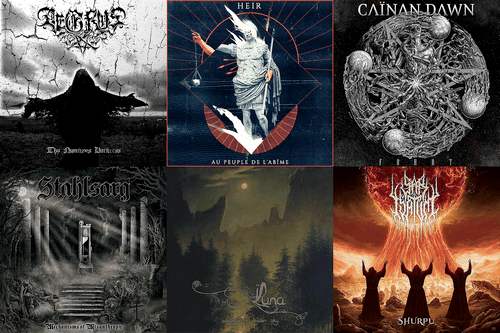
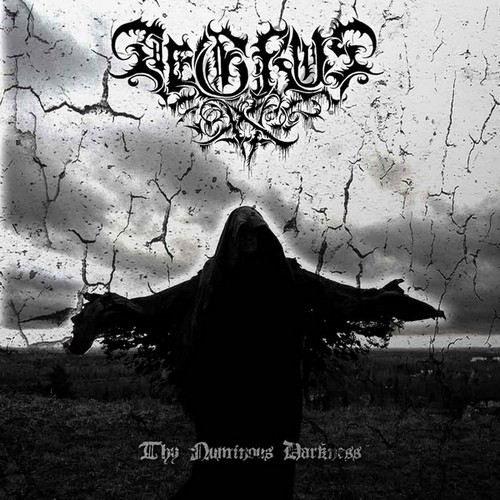
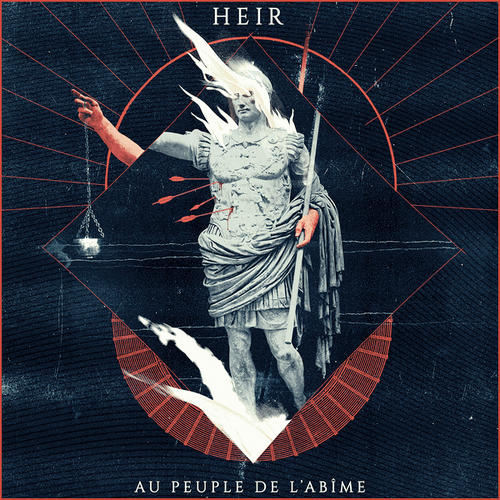
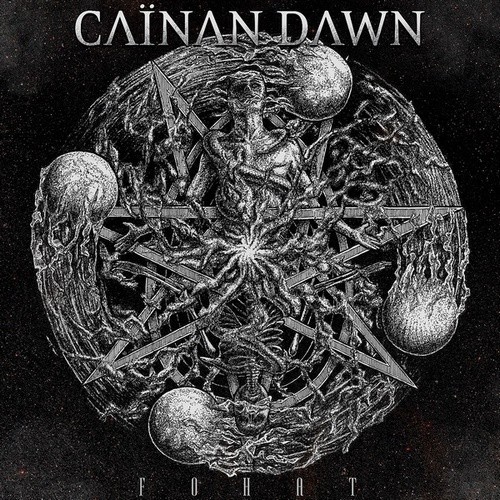
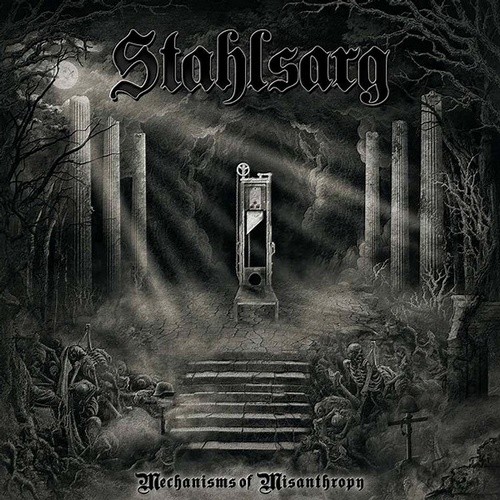

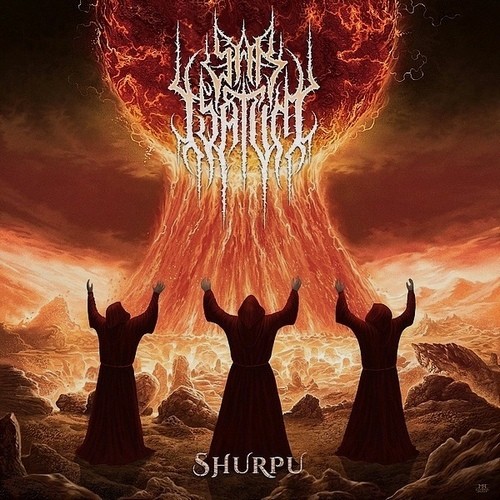
Hail Luna! I’ve been hoping that album would show up in someone’s list!
some great stuff here. love this time of year. full of new discoveries.